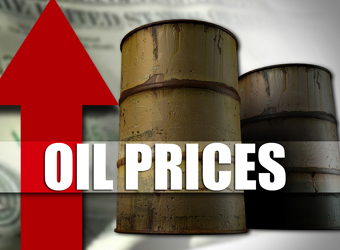Oil prices held near three-year highs on Thursday, supported by a surprise drop in U.S. production and lower crude inventories, although analysts increasingly warned of signs that fuel markets have overheated.
U.S. West Texas Intermediate (WTI) crude futures were at $63.53 a barrel at 0144 GMT, 4 cents below their last settlement but still close to a December 2014 high of $63.67 per barrel reached the previous day.
Brent crude futures were at $69.14 a barrel, 6 cents below their last finish. That was also close to the previous day’s high of $69.37 a barrel, which was the highest level since an intra-day spike in May 2015 and, before that, in December 2014.
Oil markets have generally been supported by a production cut led by the Organization of the Petroleum Exporting Countries (OPEC) and Russia that started in January last year and is set to last through 2018.
More immediate price support came overnight from the United States, where crude inventories fell almost 5 million barrels in the week to January 5, to 419.5 million barrels.
That’s slightly below the five year average of just over 420 million barrels. U.S. production fell 290,000 barrels per day to 9.5 million bpd, the EIA said, foiling expectations of U.S. output breaking through 10 million bpd.
“Supply disruptions and falling U.S. and global inventories have driven crude oil higher,” said Ole Hansen, head of commodity strategy at Saxo Bank in a note.
“Such is the current mood that bullish news tends to get more attention than potentially bearish signals,” he added.
Bearish signals include a rise in fuel inventories as well as a fall in refined products profits in Asia, which are expected to hamper orders for new feedstock crude.
U.S. gasoline stocks rose 4.1 million barrels, EIA data showed, more than expected, while Singapore average refinery profit margins have fallen below $6 per barrel this month, their lowest seasonal level in five years.
Singapore average refinery profit margins have fallen below $6 per barrel this month, their lowest seasonal level in five years.
And with the crude price up by more than 13 percent since early December, some analysts expect a downward price correction following the recent bull-run.
“Markets are getting a bit fatigued, and a healthy correction could be on the cards,” said Stephen Innes, head of trading for Asia/Pacific at futures brokerage Oanda in Singapore.


